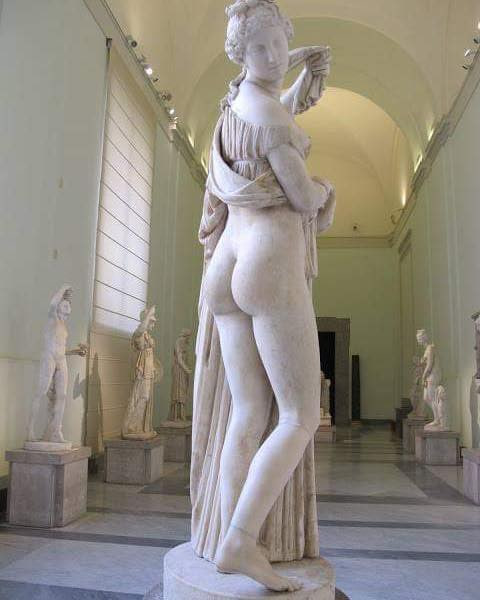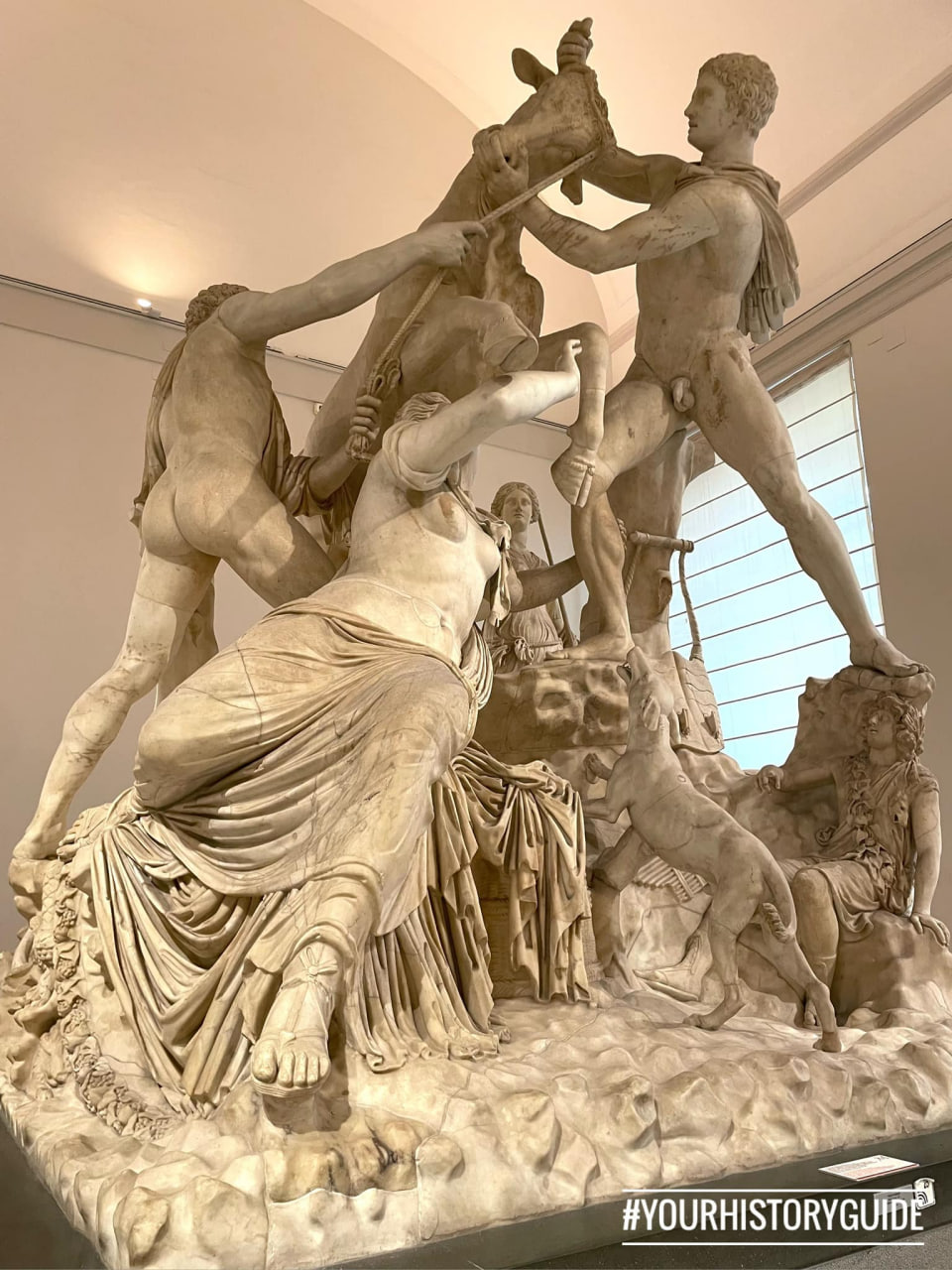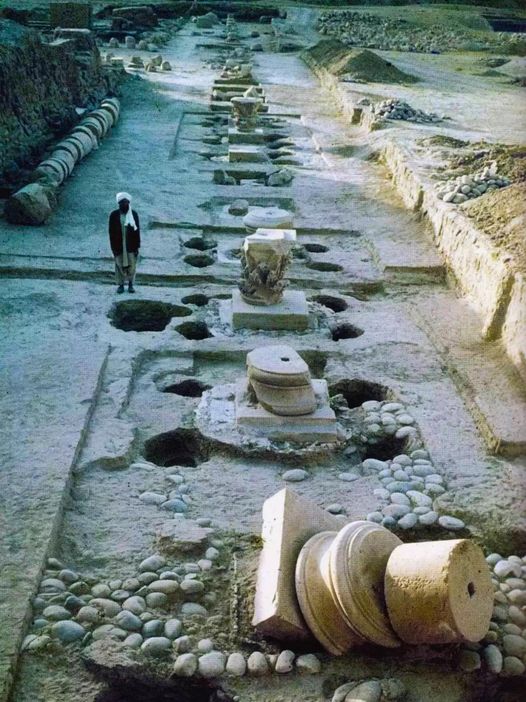Reconstruction of the House of the Faun, one of the most luxurious villas in Pompeii, destroyed in 79. The House of the Faun, constructed in the 2nd century BC during the Samnite period (180 BC), was a grand Hellenistic palace that was framed by peristyle in Pompeii, Italy. The famous Alexander Mosaic, showing Alexander the Great was found in that exact villa."

The skyscraper was first, and foremost, commodity. That is, the commodity of rentable (that is, usable) square feet. The single reason for its existence was to multiply the amount of usable area of one’s property by stacking one floor on top of another. The key word in a nineteenth century skyscraper was “usable.” As interior space in buildings throughout history, up to the advent of air conditioning and fluorescent lighting in the early twentieth century, was completely dependent upon access to daylight and natural ventilation provided by operable windows, there was a natural limit as to how far from a window a person could be located and still be able to reasonably function. We only need to go back to the Roman house to see how a building must be designed in order to perform “naturally,’ that is without the aid of electricity. A Roman urban house was planned around the open-air atrium, a central, unroofed space that provided daylight, ventilation, spatial relief, and fresh rainwater for its inhabitants.
 Palazzo Strozzi, Florence. (Online)
Palazzo Strozzi, Florence. (Online)
This was updated in the Renaissance to a multi-storied exterior space. In essence, a traditional urban building, stretching back to ancient Rome, therefore, was a hollow box: a person would build walls up to, and around one’s lotlines, and then line these walls with usable space that relied on the central opening, the atrium, for daylight and ventilation. When one looked down from above, a pre-electric city comprised of hollow buildings.

2.8. THE DOUBLED-LOADED CORRIDOR WITHOUT AN ATRIUM
 Depth of Daylight Penetration Through a Window (Online)
Depth of Daylight Penetration Through a Window (Online)
The maximum distance from a window to ensure effective daylighting is 24′ to 25,’ depending upon the height of the ceiling. An 11′ ceiling, with the windows pushed right up to the edge of the ceiling could provide sufficient daylight up to 24′ away from the window. A lower ceiling would obviously reduce the penetration depth of the daylight, reducing the distance from the window that would be provided sufficient daylight to function. In a paper that Root delivered to an architectural class at the Art Institute in June 1890 on the subject of designing a skyscraper, this is precisely where he stated an architect would start:
“Of course, the first radical question to suggest itself is that of light. And this will at once dictate certain general and entirely preliminary conditions of plan upon the ground. Experience has demonstrated that all spaces within the enclosure of four walls which are not well lighted by sunshine, or at least direct daylight, are in office buildings non-productive. The elementary question is, therefore, how to arrange the building upon its lot that every foot within it shall be perfectly lighted, and all spaces which would be dark thrown out.”

In laying out the floor plan for a skyscraper on a site, a planning module of 32′ was standard: an office depth of 24′ from the window wall plus an 8′ wide corridor, that was usually lit from the daylight within the adjacent offices by a transom located above the doors, and sometimes the corridor walls themselves. If the minimum dimension of the site was at least 56′ wide, one could use a double-loaded corridor scheme (24′ + 8′ + 24′) with little wasted area. A site dimension smaller in size would obviously require reducing the depth of the offices, until only a single-loaded corridor, 32′ would work. The challenge came when one’s site had a minimum dimension greater than 56.’ As this dimension grew, while the office depth from the window wall had to remain 24,’ the width of the corridor correspondingly increased until the overly wide hallway was simply wasteful in construction costs. The corridor would become darker and darker as the walls with the transoms grew farther apart.
 Typical floor plan of a single-loaded corridor scheme around an internal atrium for a site with a width greater than 60.’ (Drawing by Kyle Campbell)
Typical floor plan of a single-loaded corridor scheme around an internal atrium for a site with a width greater than 60.’ (Drawing by Kyle Campbell)
2.9. THE SINGLE-LOADED CORRIDOR WITH AN ATRIUM
As this dimension grew larger than 60,’ it was more economical to line both edges of the site with single-loaded corridors using shallower hallways (24′ + 5′ hallway) leaving a void between the corridors that could act as a lightwell, usually running all the way to the ground floor. This permitted the daylight from a skylight at the roof to penetrate as deep into the interior as possible. This type of covered interior space, in which the corridors open into the space I define as an “atrium” as opposed to a similar type of space, with the exception that the skylight is located at the ground floor so as to make all of the floors above it open to the exterior, which I define as a “lightcourt” (although the space below the skylight will still be referred to as an atrium.

Necessity, therefore, dictated that buildings on larger lots would always be hollow on the inside. The hallways in such a plan would feel like balconies or galleries running around the perimeter of the lightwell.
 Baumann & Baumann, Chicago Chamber of Commerce, 1889. Atrium. Note the windows in the walls lining the balconies to also provide daylight. (Condit, Chicago)
Baumann & Baumann, Chicago Chamber of Commerce, 1889. Atrium. Note the windows in the walls lining the balconies to also provide daylight. (Condit, Chicago)
An early American manifestation of the interior lightcourt was the five-story high rotunda in the Boston Exchange Coffee House and Hotel designed in 1806 by Charles Bullfinch.

As technology improved by the end of the Civil War, the floors of these galleries typically would be made with glass lenses placed in the floor, so that the light could penetrate to the story below each gallery.

We will see lightwells that were as narrow as three and four feet, for the light from even these narrow slits of space was appreciated in lighting the corridors of a multistoried building, and as wide as 80.’

 Frank E. Edbrooke, Brown Palace Hotel, Denver, 1893. Atrium. (Author’s collection)
Frank E. Edbrooke, Brown Palace Hotel, Denver, 1893. Atrium. (Author’s collection)
As an example, if one’s site was 65′ square, with streets or alleys on all four sides, a single-loaded corridor scheme hugging the perimeter of the lot would result in a hollow doughnut plan with a 7′ by 7′ lightwell. As the dimensions of the site grew larger, the office depth of the single-loaded corridor still remained at 24,’ so only the size of the lightcourt would increase correspondingly. The tallest atrium constructed in the nineteenth century was the 20-story high court inside the Masonic Temple in Chicago, designed by Burnham & Root:

A fallacy perpetuated by many historians has been the idea that a lightcourt was “optional.” In other words, some authors would claim that the architect “chose” to incorporate a lightcourt. The nineteenth century architect had no such choice. As soon as the minimum dimension of a site reached around 60,’ a lightcourt that ran from the ground floor to the roof had to be part of the solution. This did not depend upon whether the building was an office building:
 S.S. Beman, Pioneer Press Building. Atrium. (Online)
S.S. Beman, Pioneer Press Building. Atrium. (Online)
Or a residential building or a department store:

 James McLaughlin, Shillito’s Store, Cincinnati, 1877. Atrium. (Author’s collection)
James McLaughlin, Shillito’s Store, Cincinnati, 1877. Atrium. (Author’s collection)
Any distance more than 25′ away from a window was simply too dark to support any effective human function. There was no option; the lightcourt was a necessity in a building up to the early twentieth century. (A sidenote: when John Portman’s Regency Hyatt House first opened in 1967, newspapers and magazines called its interior atrium “futuristic.” This, most likely, was due to the fact that most of these 19th century buildings that had atriums had been demolished to make room for even larger buildings. In other words, an entire generation had grown up having no idea that the interior atrium was a traditional component of a building, having been made obsolete with the advent of fluorescent lighting and air conditioning.)






